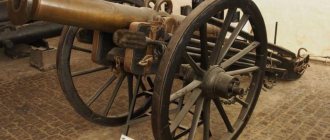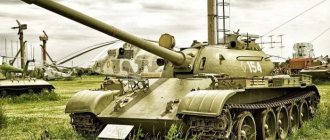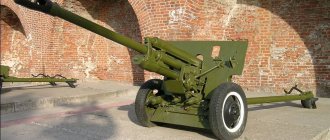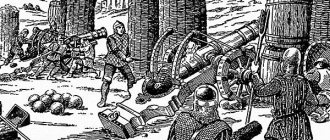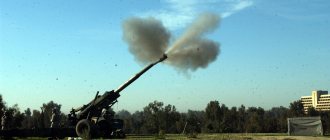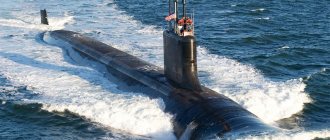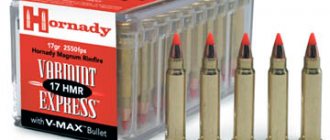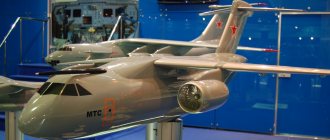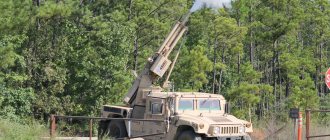Naval artillery
All warships are armed with various types of military weapons. Guns were of great importance for the development of the Navy of any country. The first naval cannons appeared in the 14th century, but over the next 200 years artillery was practically not used. It was only at the end of the 16th century that they became an important element in naval battles. England is considered the ancestor of such weapons on board ships.
In this article we will consider the following questions:
- The history of naval artillery.
- What types of guns left a significant mark on the history of world battles?
- How has a ship's cannon changed over time?
Armament of the first ships
- History of ship weapons: Ram, Harpagus, Boarding
Varieties
Ship guns - history of development
Falconet - small-caliber gun
Mortar - a cannon with a short barrel
Types of cannon shells
Images
Prerequisites for the creation of naval artillery
Tactics of ship battles until the 16th century invariably included close combat and boarding (weaponry of ancient ships). The main way to destroy an enemy ship is to destroy the crew. There were 2 main ways to get to an enemy ship during an attack:
- When a ship rammed an enemy with a bow ram, to inflict more time on the ship and crew;
- When they wanted to cause less damage to the ship, they used special gangways (corvus) and cables when the ships were aligned with their sides.
In the first case, when it is necessary to disable the enemy combat unit. Small guns were installed on the bow of the ship. Which, at the moment of ramming, fired cannonballs or grapeshot. Tearing apart the sides of the ship, the cannonball created many dangerous “splinters” up to several meters in length. Buckshot, in turn, was useful against groups of sailors. In the second case, the goal was to capture the cargo and the ship itself with less damage. In such cases, shooters and snipers were more often used.
Bow cannons were used in ramming
It was difficult to make an aimed and powerful shot from guns of the 14th-15th centuries. The stone cannonballs were poorly balanced, and the gunpowder did not have sufficient explosive power.
127 mm AU Mk 45
The lightweight, radar-guided, single-barrel 127 mm Mk 45 gun mount uses the Mk 19 cannon barrel and represents essentially a quantum leap for American medium naval artillery technology. It was designed for installation on newly built ships and is fully automated. Its maintenance requires only six people in the reloading department of the unitary loading ammunition cellar to reload a single drum designed for 20 unitary shots. The installation implements...
Read more
Smoothbore guns
Constant wars for new territories forced the production of increasingly powerful weapons for warships. At first they used stone projectiles. Over time, cast iron, much heavier, cannonballs appeared. For maximum damage, they were launched even when they were hot. In this case, there was a greater chance of the enemy target catching fire. It was possible to destroy more enemy ships in a shorter time and save your team.
To use such shells it was necessary to create new types of artillery. Thus, various types of smoothbore guns appeared, providing the possibility of long-range shooting and the use of a variety of charges. At the same time, the accuracy of the hit left much to be desired. Moreover, it was almost impossible to sink a wooden ship. Made of wood, they could remain afloat even with severe damage.
Bombard
The predecessors of ship guns were bombards. They were used in the 14th-16th centuries. During this period, it was still impossible to work with cast iron, the melting degree of which was 1.5 times higher than that of bronze or copper. Therefore, these weapons were made from forged iron plates, which were attached to a wooden cylindrical form. From the outside, the structure was secured with metal hoops. At first, the dimensions of such weapons were small - the weight of the core did not exceed 2.5 kg. In those years, there was no standardization of weapons, so all subsequent, larger guns were also called bombards. So, some of them reached a weight of 15 tons. The total length of a large specimen could be 4 meters. The chamber is the back part of the weapon into which gunpowder was placed; in the first examples of bombards it was removable.
Bombard
Breech-changeable guns
The development of metallurgy made it possible to produce cast bombards from cast iron. They were more reliable in operation and easier to maintain. The most famous bombard, although not a ship's one, is the famous Tsar Cannon.
It is worth noting that, along with bombards, until the 16th century, ships had catapults and ballistas - devices for throwing stone cannonballs.
Kulevrina
One of the most famous battles of the Middle Ages is considered to be the naval battle between Spain and England at the end of the 16th century. The Spanish Armada in those years was considered the most powerful military force in the world. In 1588, 75 warships and 57 Spanish transport vessels approached the English Channel. There were 19,000 soldiers on board. King Philip II wanted to take over the British island. At that time, Queen Elizabeth did not have a strong army, but she sent a small fleet to meet them, which had naval cannons on board.
The long-barreled bronze cannon, the culverina, also called the snake, could hit a target at a distance of up to 1000 meters. The projectile's flight speed was prohibitively high for the Middle Ages - about 400 meters per second. The British believed that a long barrel would help optimize the flight path. The Culevrins took the Spaniards by surprise, after which they turned their ships in the opposite direction. However, tragedy happened later. As a result of the Gulf Stream, a powerful current that was unknown to the Spaniards at that time, the arcade lost more than 40 ships.
100 mm and 130 mm AU (USSR)
Noticed in the early 70s. The Krivak II class missile frigates were armed with two new universal 100-mm artillery mounts with a barrel length of 70 calibers, mounted at the stern. The barrel is cooled with water. The installation is rated by NATO as fully automatic with fire control from the Kite Screech radar or an optoelectronic sighting system located outside the installation. The new artillery mount was subsequently spotted installed on Udaloy-class anti-submarine warfare destroyers...
Read more
Naval guns of the 17th century, the appearance of the “Classical cannon”.
Initially, all artillery pieces were called bombards, and then cannons. However, in the 16th century, after the advent of cast iron and the consequent development of ship armament, it was necessary to somehow classify all installations. Thus, it was customary to consider cannons to be artillery devices whose barrels were 10 feet long. This size was not chosen by chance; in England in the 17th century, there was an opinion that the length of a gun barrel was directly related to the range of the projectile. However, this turned out to be true, only in theory. The black powder used at the time had a low combustion rate, meaning that the projectile only gained acceleration in a small part of the gun barrel. Having calculated the optimal barrel length, they created a weapon that was not too large and heavy and had an optimal rate of use of the powder charge.
At the same time, it became possible to carry out targeted shooting - the charge received a clear flight path. Weapons with a shorter barrel length were called mortars, howitzers, and others. Their flight trajectory was not strictly defined; the cannonball was launched upwards - overhead firing.
Until the 17th century, artillery installations for sea and land battles were no different. But with the increase in naval battles, additional elements appeared on ships to work with artillery. On warships, guns were tied with a powerful cable, which served to hold the ship's gun during rollback, and were also mounted on wheels. With their help, the device was returned to its original position. To reduce kickbacks, a vingrad was installed - a protruding part of the rear of the gun.
Sailors are beginning to study ballistics - the analysis of the movement of a projectile, which determines the speed and trajectory of flight. Ammunition consisted of cast iron cannonballs, grapeshot, and explosive or incendiary shells.
Increasingly, when evaluating a gun, attention was paid to aiming speed, simplicity and convenience of loading, and reliability. During naval battles, ships fired tens of tons of cannonballs at each other.
100 mm AU "Model 1968-11"
The Model 1968-11 100mm artillery mount, with a 55-caliber barrel, is the latest version of a series of French 100mm guns that are designated Models 1953, 1964 and 1968-11. In comparison, the Model 68-11 is lighter and fully automatic, with the option of autonomous operation by a gun turret crew of only two people. The barrel has a longer life than that of guns of previous models, due to the presence of an air purging system and water cooling after each shot. The gun can be used to destroy air...
Read more
18th century ship cannons – Coronade
Warships in the 18th century already had a large number of cannons. Their weight and size were no different from 17th century installations. However, several improvements have been created:
- The ignition of gunpowder was no longer carried out using a wick - instead a flint lock was installed;
- The guns were located not only on the deck, they were installed throughout the ship: lower and upper decks, bow, stern. The heaviest installations were located in the lower part of the ship.
- For large guns, as before, a carriage with wheels was used. But now special guides have been made for them, along which the wheels rolled back when fired from a cannon and returned back.
- In the 17th century, cannonballs flew no more than 200 meters. Now the projectile covered 1000 meters.
- The quality of gunpowder has improved. In addition, it was already packaged in the form of caps or cartridges.
- New types of shells appear - nipples, explosive bombs, grenades.
Also at the end of the 18th century, a new type of artillery weapon appeared - the caronade. Which, although they had a weak charge and low core speed, could quickly recharge, which was of key importance in close combat. The corona gun was used against the crew and rigging of an enemy ship. In general, the reload speed of the gun reached 90 seconds, with an average of 3-5 minutes.
Coronada
A striking representative of a warship of the 18th century is the battleship Victoria, which was launched in 1765; it is currently a museum exhibit and docked in Portsmouth.
Ship “Victoria”
Soviet naval MLRS
To bombard the shore and suppress defenses, the Soviet Navy adapted some landing ships to carry modified versions of the army's multi-barrel MLRS. The oldest type in use is the 18-barrel 140mm launcher, mounted in pairs with fire deflector shields on the upper deck of Midnight A/B/C-class medium landing ships. The projectile used is a turbojet MF-14-0F, weighing 39.6 kg with an 18.8 kg high-explosive fragmentation warhead. Firing range is about 10 km. The ammunition load is expected to include...
Read more
19th century naval guns – bombing guns
Improved technology and the invention of granular gunpowder. It made it possible to build more accurate and powerful guns. But this was already a necessity, and not just a consequence of technological progress. The appearance of the first ships, whose hulls were lined with metal plates below the waterline, began to change the previous idea of war at sea.
Improving unsinkability in parallel with firepower, the ships were well protected in close combat. The age of boarding battles has already passed and the ships themselves were the target of the battles. Simple cores could no longer cause serious damage to the ship. This led to the creation of guns that fired high explosive shells and bombs. They were called bomb guns.
The design of the smoothbore gun itself was changed; the projectile was now loaded from the breech of the barrel. Now there was no longer any need to roll back the barrel to load the cap (gunpowder) and the projectile. With the gun weighing several tons, this greatly exhausted the team. Such guns could send shells 4 km.
At the end of the century, ships appeared in the fleet whose hulls were made only of metal. Torpedoes were used to damage the underwater part of the ship.
The arms race led to the fact that the sailors simply could not cope with the new guns. Increasing the projectile's flight range made aiming very difficult. Combat tests were carried out with large calibers up to 15 inches (381 mm) - such artillery was very expensive to produce and had a very short service life.
406 mm Mk 7 gun turret
With the re-commissioning of the US Navy's Iowa-class battleships, its naval artillery now turns out to be the largest caliber in the world. With nine 406 mm Mk 7 Mod 0 radar-guided guns in three 1,708-ton gun turrets, each with three guns, the Iowa requires a crew of 77 men in each turret, plus an additional 30-36 men in the magazines. The ammunition used is high-explosive fragmentation shells of increased power and armor-piercing shells. The latter can penetrate up to 9 m of reinforced concrete or...
Read more
120mm AU "Bofors"
The 120mm Bofors artillery mount, with a 46-caliber barrel, was designed for use against air and surface targets. Housed in a 4mm thick steel gun turret, the gun mount has two ready-to-use magazines mounted on a cradle and these are manually loaded from the magazine lift system. An alternative to automatic control is a gyro-stabilized individual control panel for the gunner on the installation. For this purpose, telescopic sights are installed, aiming...
Read more
Where to apply
Today there are only a few educational institutions that provide the country with highly trained specialists in this field. There is not a single university in Moscow offering this course, which is not surprising, since training requires the presence of a naval fleet in close proximity. We advise you to pay attention to the following educational institutions:
- St. Petersburg State Marine Technical University;
- Technological Institute of the Southern Federal University in Taganrog;
- Russian State Hydrometeorological University;
- Branches of Kuban State University (in the cities of Goryachiy Klyuch, Korenovsk, Kropotkin, Novorossiysk, Tikhoretsk and Tuapse);
- Zheleznogorsk branch of the Kursk Institute of Management, Economics and Business;
- Branch of Armavir State Pedagogical University in the village of Leningradskaya, Krasnodar Territory.
Job prospects by profession
Where can you work after graduation? The range of professions is not wide, which is explained by the narrow specificity of the field. Thus, graduates of “Ship Armament” can occupy the following positions:
- ballistic engineer,
- shipbuilder,
- programmer,
- ship electrician,
- design engineer,
- ship mechanic.
It is worth considering that the activities of the above specialists are often carried out under the heading “secret”. In view of this, many graduates of the department are subject to strict restrictions, in particular visa restrictions.
It is quite difficult to indicate the average salary level: it all depends on the qualifications and uniqueness of the acquired profession. So, some specialists can receive no more than 20,000 rubles, while others can receive more than 100,000 rubles. As a rule, young experts do not have problems finding work, since employers find such individual personnel on their own.
114-mm AU Mk 8 "Vickers"
The British Navy has used the 114mm weapon as its standard medium caliber gun since World War II. In the mid-60s. RARDE began development of a project for a fully automatic version to replace the semi-automatic Mk 6 in a two-gun turret. Based on the British Army's Abbot gun, the radar-guided 114mm Mk 8 artillery mount has a 55-caliber barrel with a muzzle brake and ejector. The artillery mount is designed and equipped with a simple ammunition supply system...
Read more
Admission conditions
In order to find out exactly what exams you will need to take to enter a specialty, it is important to find the relevant information in advance on the universities’ websites or directly in the dean’s offices themselves. Each educational institution establishes its own list of subjects, however, as a rule, graduates present scores for :
- mathematics (profile),
- Russian language,
- computer science and ICT or physics.
However, some universities may require USE results in a foreign language and chemistry.
105-mm MLRS "Breda" SCLAR
The 105mm Breda SCLAR MLRS consists of two 20-barrel launchers for 105mm rockets, an Elseg fire control system and a magazine filled with SNIA rockets. The launcher is placed on the ship in such a way as to provide the widest possible firing area. The equipment of the remote fire control system will ensure their automatic preparation and guidance to respond to any incoming threats detected by the ship's electronic intelligence station. The sequence of choosing the type of missile, ...
Read more
